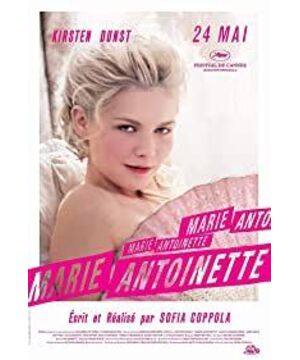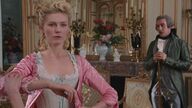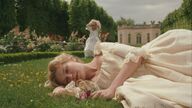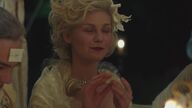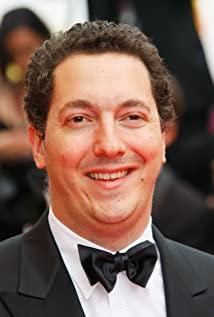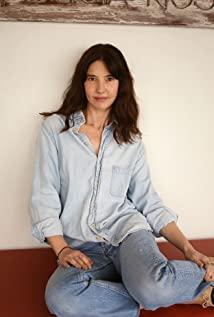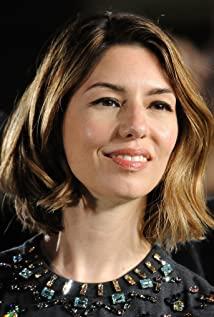The movie "Peerless Queen" can be regarded as the film and televisionization of Zweig's novel "Queen of the Dead".
"Peerless Beauty" tells the story of Queen Marie Antoinette, who was pushed to the guillotine during the French Revolution.
This is a real character, and Zweig's "Queen of the Dead" comes before it. There is basically no innovation in the storyline.
The movie is based on the timeline, from the queen's marriage to the palace, until the Bastille is broken, the king's family moves out of Versailles, and the movie ends.
This movie presents the real Marie Antoinette in detail, Marie's experience, Marie's hobbies, character, marital status, court etiquette and so on.
1. Beautiful Rococo Costume Show
Compared with the story, the most attractive thing about this play is the Rococo costume exhibition, which is like watching a show.
"Peerless Queen" won the 79th Academy Awards, the best costume design, it is precisely because of the costume design of this film that it very well shows Mary's Versailles fashion and Trianon's pastoral.
One of Zweig's definitions of Mary was the Queen of Rococo.
This fashion style, which was born in the era of Louis XV in France, was not inherited by his grandson Louis XVI, but was loved by the queen from Austria.
Rococo style clothes and buildings, gorgeous, delicate and light, are the clothes that the idle nobles can study and wear every day. And in Versailles, Marie was the most boring one.
At the age of eighteen, she ascended the throne of the queen, with great power and wealth in her hands, but she had no interest in politics or power, her husband was impotent, and there was no child for her to release her mother's love, and she had a lot of time every day. She has fun.
What else could she do but have fun?
Marie Antoinette, who became queen for only three months, immediately became the darling of the Versailles fashion world, leading the fashion in all clothing and hair accessories.
Not to mention the stage of being a princess, after becoming a queen, she still has no interest in politics, and walks through various masquerade parties, theaters, shops, and private casinos every day.
For a long time, clothing and hair accessories were her number one priority.
If there was an important ceremony one day, in the early morning of that day, her first chambermaid would bow down and deliver a book in which all the fabric patterns of the clothes stored in the closet were pinned to it. Marie Antoinette has to decide which dress she wants to wear today.
Choosing which clothes to wear is a difficult decision because there are so many choices.
Each season requires the production of twelve new state costumes, twelve fantasy costumes, twelve ceremonial costumes, and hundreds of other clothes that are newly added every year are not included at all.
Exaggerated hairstyles at the masquerade
So, thinking about wearing that dress every day might cost her an hour.
Marie is passionate about leading fashion, and she regularly meets with her chief seamstress, Berdan, twice a week, and they discuss together to launch a new fashion.
Every day, Leonard, her exclusive hair stylist, rides a six-horse horse-drawn carriage from Paris to Versailles to give her a custom haircut.
Her hairstyle is also very delicate, the hair stylist will build orchards, gardens, houses, boats in the hair.
Her hairstyle will also follow the trend. The uprising in the United States is the latest trend. Free hairstyles have become the headlines of the day. The bakery in Paris was robbed, and the ladies also released "riot soft hats".
Of course, none of these details are revealed through language.
Seven years after Mary married at Versailles, the king and queen finally succeeded in consummating the marriage, and Mary gave birth to a daughter.
At this time, Mary was 22 years old. After seven years of pleasure-seeking and doing nothing, Mary gradually felt tired. The arrival of her daughter changed her.
Louis XVI gave her a small Trianon, and since then, Marie has lived in Trianon, and just like she loves fashion, she began to decorate Trianon as much as she could. Lennon.
Trianon is a small summer palace, with a total of seven or eight rooms, located in a verdant greenery among many gardens, in a completely remote area, but close to the Palace of Versailles.
Close to Versailles, but far from Versailles.
The queen regarded it as a place of spiritual refuge, and decorated it with warmth and softness, bright and elegant, and reserved.
In Trianon, Mary enjoyed the freedom and tranquility of the countryside. She brought her girlfriend and her daughter, raising chickens and ducks, feeding them, drinking the milk that had just been squeezed out, and letting her daughter's delicate hands pick up A warm egg still sticking to the chicken feathers.
In terms of costume design, the whole film presents the decadent and flashy life before the French Revolution very well.
2. Stories that advance according to time clues
This film, more like a documentary, presents Mary's life "truly" according to the time clues.
There are not many major events in Mary's life. Zweig listed a chronology at the end of "Queen of the Beheaded", and there were very few major events.
In 1766, for political needs, the French royal family formally proposed to the 11-year-old Princess Marie Antoinette.
In 1770, 14-year-old Marie, as the granddaughter-in-law of Louis XV and the wife of Crown Prince Louis-Auguste de Bourbon, officially stepped into the Palace of Versailles.
In 1772, Poland was divided, and Mary was immersed in her daily fun. She didn't know these important national events, and even if the special envoy told her, she didn't have the heart to listen and couldn't pay attention to analysis.
In 1774, Louis XV died and Louis XVI came to the throne.
During the four years from 1770 to 1774, as a princess, Marie did not have actual power, and the power was in the hands of Louis XV. Mary needed to rely on the favor of King Louis XV, otherwise the Fa-Australian League would be disintegrated.
The old Louis XV, the last mistress was Madame du Barry. Compared with the previous mistress, Madame de Pompadour, the experience of this mistress was really unbearable.
She was born into a small family as an illegitimate daughter. At the age of 15, she was selling trinkets on the squalid streets of Paris. It is unknown whether she has ever sold herself.
After a variety of jobs, she met the pimp Du Barry, who made her a high-class prostitute in Parisian high society.
Later, she met Louis XV. Louis XV tried to get her a title, introduced her as a strange lady in strict accordance with the rules, introduced her in the palace, "changed" her origin, and let her live in the Palace of Versailles , and sometimes they hang out in Trianon.
Marie Antoinette despised this woman very much. For four consecutive years, she only spoke to her when she was forced to.
This is the sentence in the film, "Today, there are quite a lot of people in Versailles."
This is a very important thing in Mary's boring daily life.
After the death of Louis XV, Dubare also withdrew from Marie's life.
Marie is a frequent visitor to the theatre. Before she ascended the post, although she was the highest-ranked woman in Versailles, she was actually overpowered by Du Barry. She expected to impose her will on everyone in Paris.
Viennese music master Gluck completed his opera "Ifigenie" and wanted to show it in Paris. The success of the master is also the glory of the court. Queen Maria Theresia, Kaunitz, Emperor Joseph II, They all expect the princess to clear the way for the master.
The court musicians declared the opera "unable to stage," and Marie Antoinette immediately forced the parties to accept the opera, began rehearsals immediately, and gave him all the support.
On the day of the show, she dragged the entire court to the premiere, her husband, her brother-in-law, and sister-in-law.
After each aria, Mary clapped deliberately from her box, and out of courtesy, her brothers-in-law, sisters-in-law, and the whole court dignitaries also clapped vigorously.
It was a victory for Marie, who had conquered Paris, though she was not yet queen.
In 1774, Louis XV died and Louis XVI came to the throne.
coronation of Louis XVI
Being crowned on the throne, for the couple, only means that they can have more unfettered fun.
Mary was addicted to gambling, and Louis went to bed on time every day and got up early to hunt.
They still don't have children, which is a big problem, the queen is 20 years old and getting prettier, with all sorts of handsome, sweet-talking men alluring her.
Mary's older brother, Joseph II, came to Versailles to persuade Louis XV to perform a male reproductive operation for the sake of the Austrian-French League.
In 1778, Mary's eldest daughter was born, Mary ushered in a life-changing moment, but the outside world began to oppose her.
The two-hour movie, the story is told here, has passed an hour and a half, so the subsequent stories are very rushed.
A very important man in Mary's life, the Earl of Filson, also appeared in the rush of thirty minutes.
In the movie, Mary and Earl Philson had a physical relationship. Of course, whether it was actually before the necklace incident is unknown.
In the second half of the timeline, there is some confusion. For example, the death of Mary's mother, Empress Maria Theresia of Austria, was in November 1780, and the necklace incident was in August 1785.
In the movie, the necklace incident was placed before the death of the queen. In fact, the necklace incident in the movie was only mentioned in a few sentences.
The necklace incident, which represents Mary's power from prosperity to decline, or an important symbol of the decline of the French royal family's power, was seen in the movie in one shot, and it was even replaced by the Queen Missing Philson, which is a pity.
After the Queen's death, in 1781, the First Crown Prince was born.
After the necklace case, Mary's third child was born, but the child died soon after.
In July 1789, the Bastille was captured, and the first crown prince died a month earlier.
After the fall of the Bastille, angry people dragged the King's family from Versailles to Paris to show the King's family their country and people.
The movie ends right in the king's carriage leaving Versailles.
In general, whether it is the plot of the movie, or the costume design, or some detailed conversations, you can find the original sentence in Zweig's novel "Queen of the Beheaded".
Therefore, if you can't watch "The Queen of the Dead Head", you basically have a general understanding of Mary after watching this movie.
3. Sofia Coppola's Waterloo
"Peerless Queen" was released in 2006. Two years ago, its director Sofia Coppola won the Best Original Screenplay Award at the 76th Academy Awards for "Lost in Translation" and won unanimous praise from Hollywood.
But "Peerless Beauty" attracted a boo to her.
Sofia Coppola is American, and so are the actors, even black.
How can an American deeply understand the history of France? This is something that the French cannot accept.
In fact, even if the film won the Oscar for best costume design, the French must have more recognition for 1956's Marie Antoinette.
This French film is about the same length as "The Peerless Queen". The film also starts from the queen's marriage to Versailles until the queen goes to the guillotine. The content of the film is richer, and the relationship between the queen and Philson is also clearer. .
It is worth mentioning that the soundtrack of "Peerless Beauty" even boldly invited the American post-punk band Bowowo. This is a bold approach, but it is not without benefits.
The French musical "Rock Red and Black" uses rock music to present a story after the French Revolution.
Overall, "The Peerless Lady" is still a success as an aesthetic film and a historical education film.
In terms of the artistry of the story and the personality of the characters, I personally think that the French 1956 version is better.
Rather than saying that Mary was pushed to the guillotine by the people, it is better to say that she was pushed to a dead end by history and national conditions.
And France's "Queen Marie Antoinette of France" very well presented people's emotions towards the queen during the revolution, and everything the queen suffered was not unfortunate. And in the face of misfortune, she still maintains the demeanor of a queen.
The queen portrayed in the movie was willful and reckless in the early stage. After encountering setbacks, she used her arrogance, stubbornness, and never admit defeat to make a waterproof cloak to resist all the dirty water and infamy thrown on her.
Zweig greatly praised Mary, who was reborn in suffering, calling her a true queen.
Mary who can only play is an incomplete Mary, and it happens that "The Peerless Queen" only highlights Mary's beauty, willfulness, and stupidity, and it stops abruptly.
Coppola's Mary, lost here, her Mary, who didn't know herself, was over.
it is a pity.
View more about Marie Antoinette reviews


